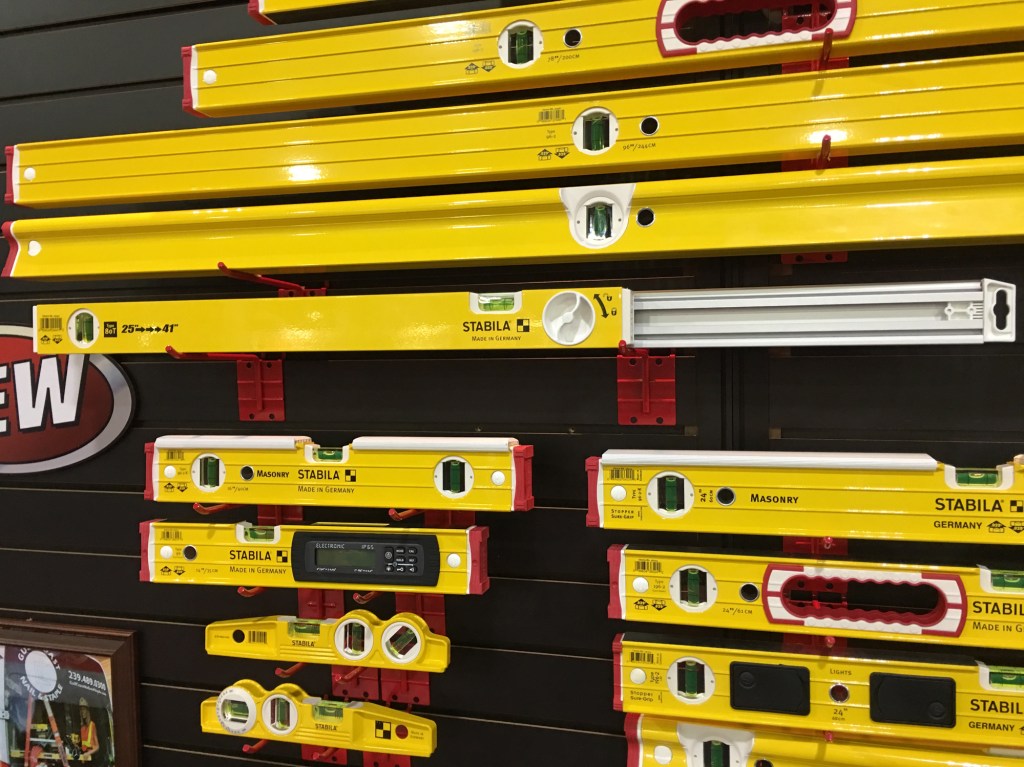Tool manufacturers, distributors, retailers, and manufacturers of related products met for the 40th annual STAFDA event in Atlanta this past November. If you’re not familiar with the event, which is run by the members-only group Specialty Tools and Fasteners Distributors Association, it is one of the biggest events of the year during which tool manufacturers give a first look at tools coming to market. Those of us who attend walk the floor with anticipation and excitement that some would argue takes on a dork-like flare fairly quickly. Seeing cool new tools for the first time is fun—especially when they reinvent a category or otherwise provide solutions that are sure to help tradespeople become more efficient and better at what they do. There were dozens of new tools at the event—and JLC’s sister publication Tools of the Trade is covering many of them online. But these eight are ones that we thought were of particular note.
1. Expandable Spirit Levels
The Type 80T Levels, which have been available in Europe for nearly a year, are expected to be released to the U.S. market in the spring or summer of 2017. The levels will be available in two lengths: 25 inches extendable to 41 inches, and 36 inches extendable to 59 inches. Unlike the XtL Exact Length Levels, which house the extension arm in the bottom of the level and so are somewhat wider, the Type 80T Levels extend from the back, resulting in a smaller profile. Stabila says the 25-to-41-inch level will cover most header sizes for doors, and the 36-to-59-inch level will be more multi-functional. The extension arms on the Type 80T Levels are lockable and provide a continuous scribe edge. Stabila intends for both levels to help window and door installers, as well as cabinet installers and millworkers. The 25-incher is expected to sell for $130 and the 36-incher for $180. stabila.com —C.E.
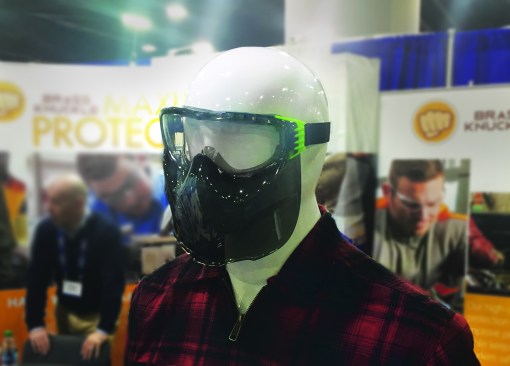
2. Darth Vader’s Face Shield
The only thing worse than wearing a face shield is not wearing one and getting hit by a chunk of debris or splashed with something toxic. Brass Knuckle’s Vader Combo is a pair of goggles attached to a face shield. Smaller and lighter than traditional face shields, its close fit makes it hard for debris to come in from the sides or bottom. The goggles are vented and have an anti-fog coating to prevent condensation from obscuring your view.
I had to try these things on because they made the mannequin that was wearing them look like Darth Vader. They were more comfortable than the goggles and face shields I’ve worn in the past. They’re said to fit over eyeglasses, but mine wouldn’t fit because they have thick plastic temples—wire rims might have worked better.
The Vader Combo has been out for a few months and sells for $13 to $14. A version with smoked lenses, for use in bright sunlight, will come out early next year. brassknuckleprotection.com —D.F.
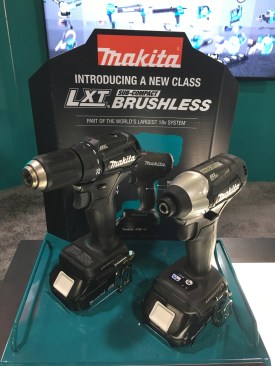
3. 18V Power in a 12V-Sized Package
During its product development research, Makita discovered that many tradespeople have both 12-volt and 18-volt tools. It also realized that we often reach for the most compact tool available for the job. With both of those findings in mind, Makita decided to look for a solution where it could offer a more compact drill/driver and impact driver for its 18V LXT battery platform. The result is the 18V LXT Sub-Compact Brushless Combo Kit (CX200RB). The tools are both black to distinguish them from the 12V versions, which are about the same size.
When equipped with a 2.0-Ah battery, the 1/2-inch Drill/Driver (XFD11ZB) weighs a mere 2.8 pounds. It has a no-load speed of 0–500 and 0–1,700 rpm. While those numbers are smaller than for a typical 18V drill/driver (the XFD07MB, for example, runs at 0–550 and 0–2100 rpm), it still delivers on power. According to Makita, the sub-compact model will drill a hole up to 1 7/16 inches in diameter in wood and 1/2 inch in steel (compared with 3 inches in wood and 1/2 inch in steel for the XFD07MB).
When equipped with a 2.0-Ah battery, the 1/4-inch Impact Driver (XDT15ZB) weighs in at 2.6 pounds. It has a no-load speed of 0–1,300 and 0–3,000 rpm and impacts per minute of 0–1,600 and 0–3,900 (compared with the XDT11Z, which runs at 0–2,900 rpm and has an impact rate of 0–3,500 ipm). The XDT15ZB delivers a respectable 1,240 inch-pounds of torque—enough to drive long TimberLoks in 4-by and 6-by material.
The kit is available now and sells for $230. It comes with the drill/driver, impact driver, two 18V LXT 2.0-Ah batteries, rapid charger, and carrying case. makitatools.com —C.E.
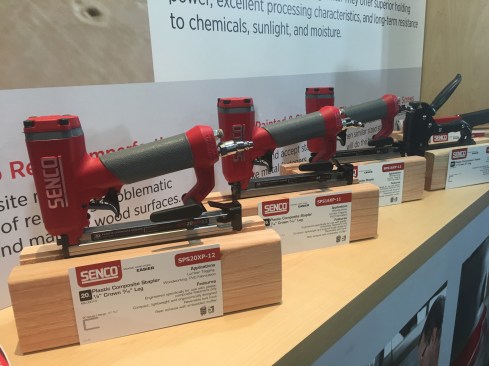
4. Self-Sealing Nails
You may or may not be aware that there are trim fasteners available that automatically fill the holes they create. The fasteners, which are made of a blend of polymer resin and fiberglass, can stay proud of the material they’re nailed into and then be sanded flush to the surface—not possible with steel fasteners. Several years ago, Tools of the Trade reported on a company called Raptor, which held the original patents on composite staplers and nailers and composite fasteners and had been selling composite nails and nailers all over the world since 1993. Raptor’s original patent, however, expired a couple of years ago. Now, Senco has developed its own version of composite staplers and nailers, which it expects to release in late February.
This new line of Senco fasteners is designed specifically to be used with a new line of air nailers and is not compatible with traditional nailers. The drive pins on the new tools are shorter than normal; this will allow the fasteners to protrude past the surface. The exposed composite fasteners can be stained or can be milled and painted or stained to blend into the final product. With these fasteners, shorter is better. As a general rule, a 3/8-inch penetration into your substrate is all you need to achieve maximum holding power, although there are some exceptions.
The important thing to remember when using composite fasteners is that they provide temporary holding power until your chosen adhesive dries. These fasteners actually have twice the holding power of similar-sized steel fasteners but only half the shear value. You cannot use these fasteners on load-bearing applications, as they will snap. Woodworking, CNC fixturing, PVC fabrication, and lumber tagging are examples of possible uses. senco.com —B.W.
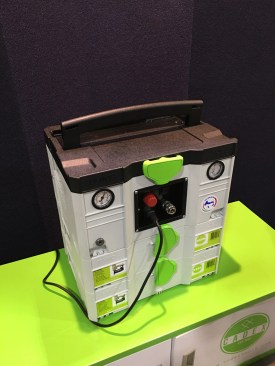
5. Compressor in a Box
At first glance, this may look like a typical stack of Systainers filled with various nail guns. But look again, and you’ll see there’s an air compressor thrown in the mix on top. Cadex, a company known for its pneumatic finish nailers, launched this new Italian-made air compressor at the show. As a carpenter who specializes in commercial and institutional millwork, I work every day with a rolling Systainer system on jobsites where noise can be a big problem for my customers. I often use vacuum clamps, air nozzles, and all sizes of pin and staple guns. A compressor like this, with a decibel reading of 68db, will keep my workspace compact and the noise at an acceptable level for my customers.
The compressor will be available in two models: a 1-horsepower SYS/3-COMP and a 1.5-horsepower SYS/4-COMP. The SYS/3, which is expected to release this month, has a duty cycle of 60%, where most compressors run at 40%. Both units have a maximum pressure output of 139 psi and kick on at 110 psi. The SYS/3 will deliver 1.9 cfm at 90 psi—enough to run two finish nailers or one larger tool like a 16-gauge nailer or angle brad nailer. It weighs 29 pounds. The suggested price on this “compressor in a box” will be $500. The SYS/4-COMP, available this spring, will offer double the cfm, weigh 31.5 pounds, and sell for about $640. cadextools.com —B.W.
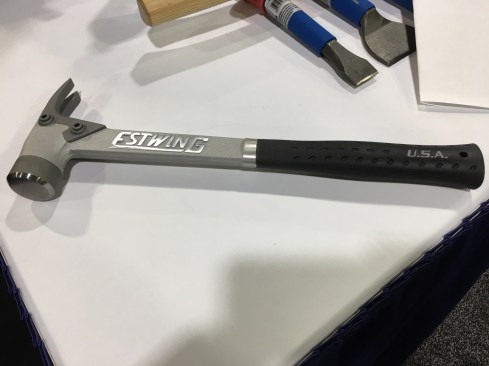
6. Estwing Takes on Stiletto
Best known for its single-piece steel hammers, Estwing is introducing the AL-Pro this year, a multi-piece hammer with a steel claw and striking face attached to a single-piece aluminum head and handle. The head is hollow and contains shot to dampen vibration and provide a dead blow. The hammer has a magnetic nail starter and like most other Estwings, a thick nylon-rubber grip to eliminate shock.
In the past, framers used 22- to 28-ounce hammers and paid the price with arm and shoulder problems. The current thinking is that lighter is better and what light hammers lack in driving force can be made up for by using a faster swing—which is why AL-Pro framing hammers weigh only 14 ounces. Stiletto popularized this idea with its titanium hammers. Estwing went with aluminum because it’s lighter and easier to work with, and it’s not subject to the patents Stiletto holds on titanium.
The AL-Pro is intended to compete with premium hammers such as those from Stiletto. Available with a smooth or milled face, it will sell for about $130 and is expected to hit store shelves in early 2017.
An interesting side note is that the AL-Pro is produced at the Estwing factory in Rockford, Ill., using aluminum castings supplied by an American company that makes receivers for AR 15s. Demand for those rifles has been high, so Estwing had a tough time getting the necessary castings at first. estwing.com —D.F.
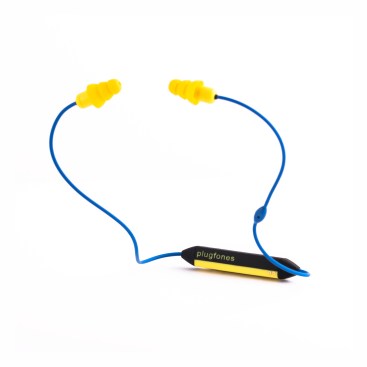
7. Headphones with Hearing Protection
Plugfones are earplug headphones that allow you to listen to audio while they block ambient sound from tools and machinery. There are a few different models—I have the most basic corded one. At STAFDA, Plugfones launched a new, Bluetooth model, the Liberate. When paired with a phone or media device, the Liberate allows you to listen to audio without a wired connection—and to answer the phone or ignore a call with the push of a button.
The world is filled with devices that allow you to listen to audio with ear buds or plugs. What’s different about these is they have an EPA noise reduction rating (NRR), so you know they’ll block a certain amount of ambient sound. Plugfones’ devices have an NRR of 25, which means they reduce noise exposure by about 25 dB—when the earplugs fit perfectly. The manufacturer (of these and other earplug phones) recommends cutting the NRR in half (de-rating) to account for a less-than-perfect fit. So if you’re working in an area with 100 dB of sound (for example, with a circ saw or chain saw), Plugfones will reduce your exposure to somewhere between 75 dB (100 – 25) and 88.5 dB (100 – 12.5). It’s worth noting that the PEL (personal exposure limit—as set by OSHA) is 85 dB for an eight-hour day. Subject your ears to more than that on an ongoing basis, and there’s a good chance your hearing will suffer. Price: $100. plugfones.com —D.F.
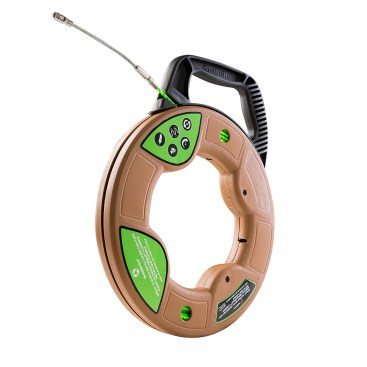
8. Smooth and Strong Fish tape
I stopped by the Southwire Tools booth, where I had the chance to try out the new line of Simpul fish tapes. Designed to be pushed or pulled through EMT and PVC conduit, the tapes are composed of a spiral extruded polymer meant to reduce the amount of force required in these situations. I haven’t pulled a lot of wire through conduit in my career, but I was impressed with how easily the fish tape moved through the series of bends and turns that were set up at the STAFDA booth. Southwire says that the new fish tapes are “virtually unbreakable” and that they are kink resistant. The new line of tapes is available in 75-, 100-, 125-, and 240-foot lengths and two leader styles: a swiveling metal leader and a glow-in-the-dark nonconductive leader. The fish-tape lines themselves are said to provide the strength of steel tape with the nonconductive properties of fiberglass. A 75-foot nonconductive fish tape retails for about $80 online. There’s a $3 upcharge for the metal-leader version. southwiretools.com —C.E.
